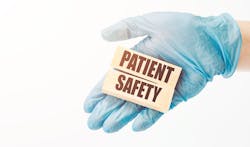The average risk of three healthcare-associated infections (HAIs) spiked to a 5-year high in hospitals during the COVID-19 pandemic and remain high, according to The Leapfrog Group’s spring 2023 Hospital Safety Grade data.
Founded in 2000 by large employers and other purchasers, the nonprofit Leapfrog Group said its Safety Grades also show a continued decline in patient experience measures, which are reported by patients and correlated with patient outcomes, the organization said.
The Leapfrog Group compared this Safety Grade cycle’s infection data, which covered late 2021 and 2022, to the 2021 Safety Grades, covering the period immediately prior to the COVID-19 outbreak. The analysis found that:
- Average CLABSI standard infection ratio increased by 60 percent;
- Average MRSA standard infection ratio increased by 37 percent; and
- Average CAUTI standard infection ratio increased by 19 percent.
“The dramatic spike in HAIs reported in this Safety Grade cycle should stop hospitals in their tracks—infections like these can be life or death for some patients,” said Leah Binder, president and CEO of The Leapfrog Group, in a statement. “We recognize the tremendous strain the pandemic put on hospitals and their workforce, but alarming findings like these indicate hospitals must recommit to patient safety and build more resilience.”
Across the country, increases in infections varied by state:
- 32 out of the 50 states had a significant increase of CLABSI, with the biggest increase in West Virginia;
- 18 out of the 50 states had a significant increase of MSRA, with the biggest increase in West Virginia; and
- 11 out of the 50 states had a significant increase of CAUTI, with the biggest increase in New Mexico.
The 2023 spring Safety Grades measure six different HAIs using the standardized infection ratio, a statistic that compares the actual number of HAIs at each hospital to the predicted number of infections. Although MRSA, CLABSI and CAUTI worsened, Clostridioides difficile (C. Diff) improved 15 percent from spring 2021 to spring 2023 and there was not a significant change for surgical site infections following surgery.
“Not only are HAIs among the leading causes of death in the U.S., they also increase length of hospitalization stays and add to costs,” Binder said. “Our pre-pandemic data showed improved HAI measures, but the spring 2023 Safety Grade data spotlights how hospital responses to the pandemic led to a decline in patient safety and HAI management.”
Of the over 30 measures used to generate Hospital Safety Grades, the Leapfrog Group reports on five patient experience measures that have a direct impact on patient safety outcomes: nurse communication, doctor communication, staff responsiveness, communication about medicine and discharge information. Nationally, the average of all five measures declined when compared to pre-pandemic numbers. Compared to the 2021 spring Hospital Safety Grade report covering 2019, the new spring 2023 Hospital Safety Grade results, covering data from 2021 and 2022, found the most significant declines in communication about medicine (4.28 percent decline) and staff responsiveness (3.46 percent decline).
Additional highlights from the spring 2023 Safety Grades include:
- Twenty-nine percent of hospitals received an “A,” 26 percent received a “B,” 39 percent received a “C,” 6 percent received a “D,” and less than 1 percent received an “F.”
- The top 10 states with the highest percentages of “A” hospitals are: New Jersey, Idaho, Utah, Pennsylvania, Connecticut, North Carolina, South Carolina, Colorado, Virginia and Massachusetts.
- There were no “A” hospitals in Delaware, District of Columbia or North Dakota.
In a statement about the Leapfrog data, Jeff Salvon-Harman, M.D., vice president of safety for the Institute for Healthcare Improvement (IHI), noted that previous reports from the CDC have described increases in Healthcare Associated Infections (HAIs) during 2020 and 2021, coincident with the COVID-19 pandemic’s disruption of hospital-based health care delivery. Leapfrog’s current Hospital Safety Grades for HAIs shows similar impacts in 2022 that have taken a very real human toll on the impacted patients: longer hospital admissions, additional treatments, discomfort, pain, or a shortened life. Understandable outrage is echoing from patient safety advocates and their organizations.
But Salvon-Harmon added that health systems and the healthcare workforce “have not been standing idly by, allowing these increases of HAIs to happen. We know from decades of work in hospitals and other care settings that most patient safety complications result from flawed systems, not negligent practitioners. The pandemic resulted in unimaginable and undeniable strain on the healthcare workforce, with staffing shortfalls, changes in levels of experience, and impacts on cultures of safety amidst staff turnover and moral distress. All of these factors have contributed to decreased system-level performance in preventing HAIs. With so many disruptive influences on the healthcare workforce, we cannot expect that they can outperform system designs which are incapable of meeting current patient and community needs.”
He added that COVID-19 levels in communities are now waning and signaling that the pandemic is winding down. “With this we are seeing in Leapfrog’s (and others’) recent data that HAI prevention is beginning to improve again. To completely regain the lost ground, and to even reach the point of eliminating these events all together, health systems and their leaders will need to engage now in human-centered redesign of care delivery, with patients and the healthcare workforce at the center.”


